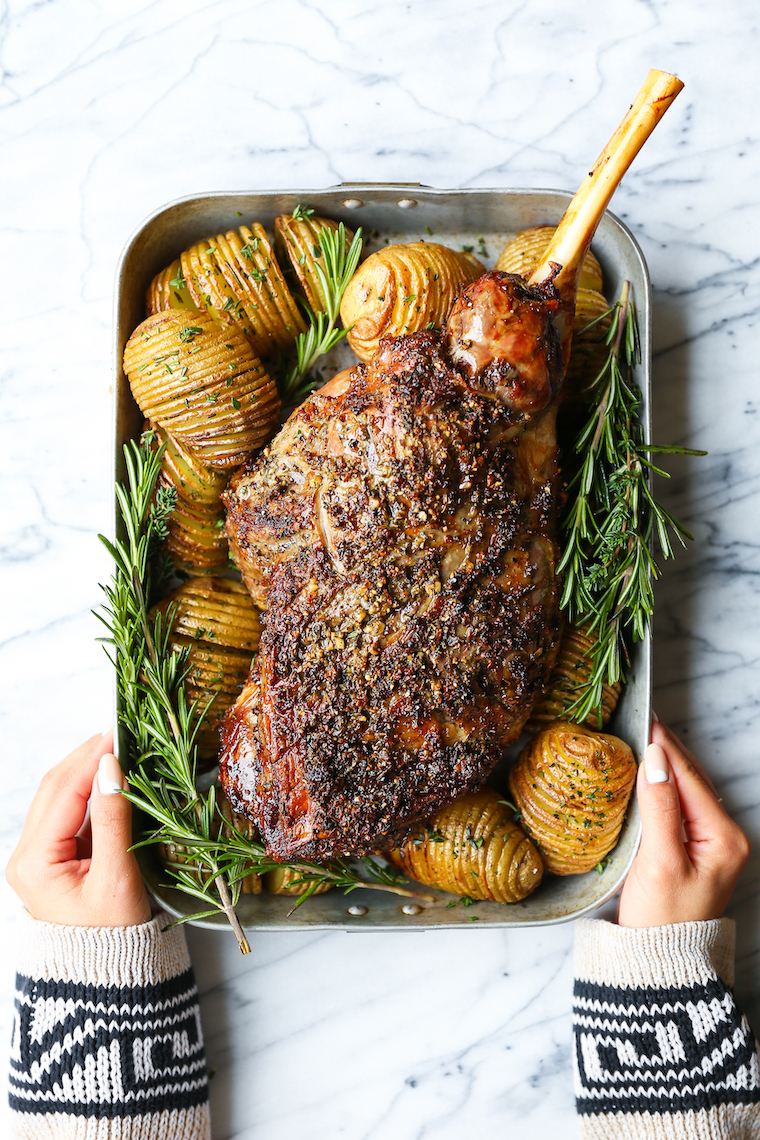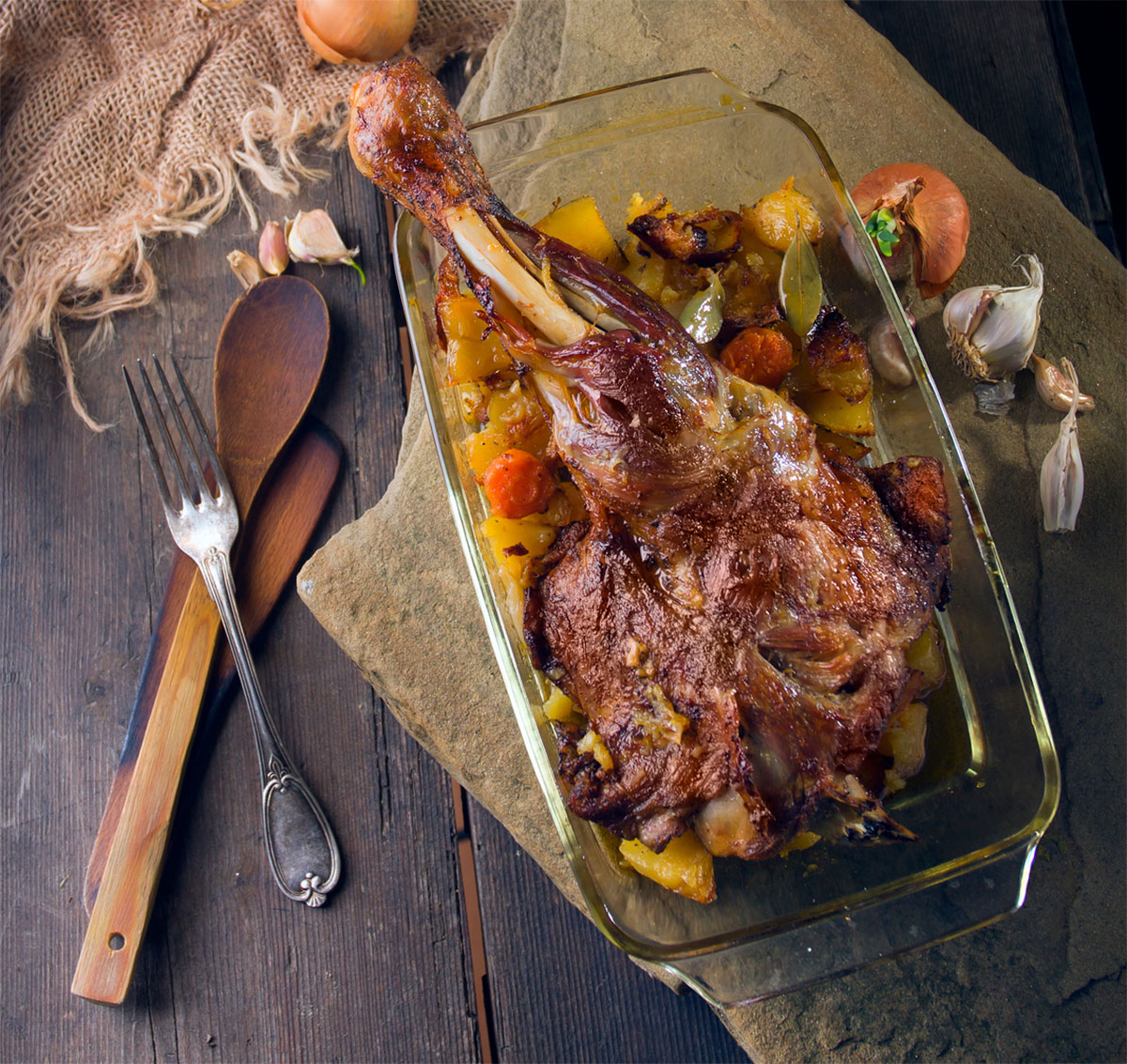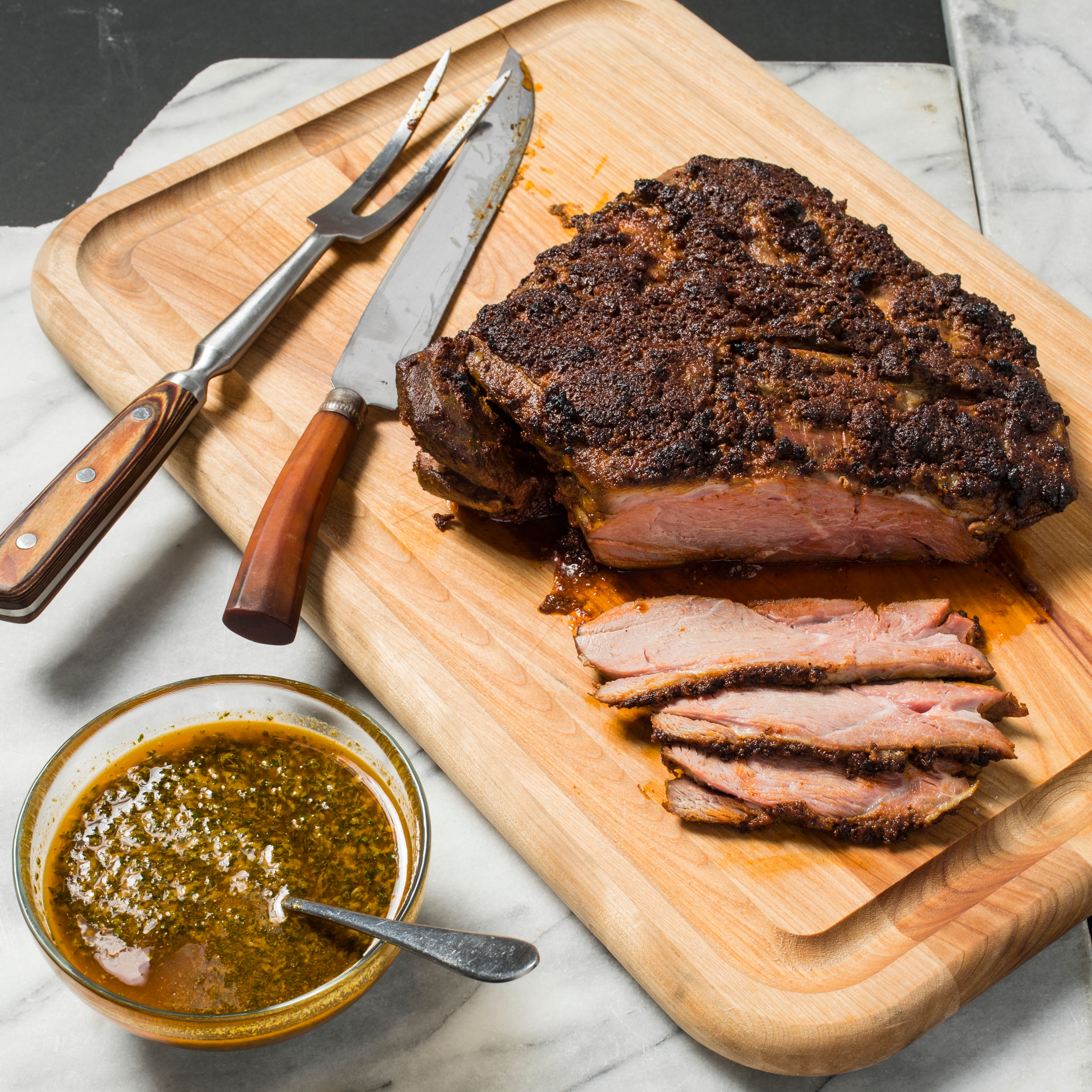Few culinary experiences rival the satisfaction of biting into a perfectly cooked leg of lamb. With its tender texture and rich flavor, this classic dish has graced tables for generations, becoming a staple of celebratory meals and family gatherings. However, achieving that ideal balance of tenderness and flavor requires careful consideration of the cooking method. In this comprehensive guide, we delve into the various techniques for preparing a leg of lamb, exploring their advantages, and helping you choose the ideal approach for your culinary masterpiece.
Understanding the Anatomy of a Leg of Lamb

Before we delve into the cooking methods, let’s take a moment to understand the anatomy of a leg of lamb. This knowledge will provide valuable insights into the best ways to unlock its full potential on the plate.
What Is a Leg of Lamb?
A leg of lamb refers to the hindquarters of the animal, specifically the back haunches. This cut encompasses the upper portion of the leg, extending from the hip joint to the knee joint. Within the leg of lamb, you’ll find a combination of muscles, connective tissue, and fat, each contributing to the meat’s flavor, texture, and overall succulence.
Muscles:
The leg of lamb contains several distinct muscles, each with its own characteristics and culinary qualities. These muscles include:
- Topside: Located on the outer side of the leg, the topside muscle is relatively lean and tender, making it well-suited for roasting or grilling.
- Silverside: Positioned on the inner side of the leg, the silverside muscle is lean but slightly tougher compared to the topside. It benefits from slower cooking methods such as braising or slow roasting.
- Knuckle or Shank: Found at the lower end of the leg, near the knee joint, the knuckle or shank muscle is flavorful but requires longer cooking times to break down its connective tissue and tenderize.
Bone-in vs. Boneless
When shopping for a leg of lamb, you’ll often encounter options of bone-in or boneless cuts. Each variation offers its own set of advantages and considerations, influencing both the cooking process and the final outcome on the plate.
Bone-in:
A bone-in leg of lamb retains the entire bone structure within the meat, including the femur and possibly portions of the hip and shank bones. Cooking meat with the bone intact imparts additional flavor, as the marrow within the bone contributes richness and depth to the surrounding meat. However, carving bone-in cuts may require some skill, as you’ll need to navigate around the bone to extract the meat.
Boneless:
In contrast, a boneless leg of lamb has had the bone removed, resulting in a more uniform and easy-to-slice piece of meat. While boneless cuts lack the added flavor from the bone marrow, they offer convenience in carving and serving, making them a popular choice for home cooks seeking simplicity. Additionally, boneless cuts are often tied with kitchen twine or secured with netting to maintain their shape during cooking, ensuring even heat distribution and consistent results.
The Ideal Cooking Methods for a Leg of Lamb
Roasting

Overview: Roasting is arguably the most traditional and popular method for cooking a leg of lamb. This technique involves cooking the meat in a dry heat environment, allowing it to develop a beautifully caramelized exterior while retaining its moisture and tenderness.
Advantages:
- Flavor Development: Roasting enhances the natural flavors of the lamb, resulting in a rich and aromatic dish that is sure to tantalize the taste buds.
- Texture Contrast: The combination of a crispy exterior and tender interior creates a delightful contrast in textures, adding depth to each mouthful.
- Ease of Preparation: Roasting requires minimal hands-on effort, making it an accessible cooking method for both novice and experienced home cooks.
- Customization: Roasting allows for endless customization with seasonings, herbs, and aromatics, allowing you to tailor the dish to your personal preferences and culinary creativity.
Best Practices:
To achieve culinary perfection when roasting a leg of lamb, follow these best practices:
- Preheat the Oven: Start by preheating your oven to the desired temperature, typically around 325°F to 350°F. A properly preheated oven ensures even cooking and consistent results.
- Season Liberally: Season the leg of lamb generously with salt, pepper, and your choice of herbs and spices. This step not only enhances the flavor of the meat but also forms a flavorful crust during roasting.
- Consider Searing: While optional, searing the leg of lamb before roasting can enhance the depth of flavor and create a beautiful caramelized exterior. Simply heat a skillet over high heat and sear the lamb on all sides until golden brown.
- Use a Roasting Rack: Place the leg of lamb on a roasting rack set inside a roasting pan. Elevating the meat allows hot air to circulate evenly around it, promoting even cooking and ensuring a crispy exterior.
- Monitor Internal Temperature: Use a meat thermometer to monitor the internal temperature of the lamb throughout the cooking process. Aim for a final temperature of around 135°F to 145°F for medium-rare to medium doneness, depending on your preference.
- Rest Before Carving: Once the leg of lamb reaches the desired doneness, remove it from the oven and let it rest for at least 15 minutes before carving. This allows the juices to redistribute within the meat, ensuring maximum juiciness and tenderness.
Grilling
:max_bytes(150000):strip_icc()/Rose-Marinated-Grilled-Leg-of-Lamb-with-Walnut-Salsa-Fresca-FT-RECIPE0422-42c002ac9d91402f8dbb6cd3c9af7fb6.jpg)
Overview:
Grilling involves cooking the leg of lamb over an open flame or heat source, imparting a distinct smoky flavor and creating caramelized grill marks on the exterior of the meat. This method allows for direct heat cooking, resulting in a beautifully seared crust while preserving the lamb’s juicy and tender interior. Grilling is a versatile technique that offers endless possibilities for flavor experimentation and customization.
Advantages:
- Smoky Flavor: Grilling over an open flame imparts a rich smoky flavor to the leg of lamb, enhancing its natural taste and aroma.
- Crispy Exterior: The intense heat of the grill creates a crispy and caramelized crust on the exterior of the meat, adding texture and depth to each bite.
- Versatility: Grilling allows for endless flavor variations, from marinades and rubs to wood chips for smoking, providing ample opportunities for culinary creativity.
- Outdoor Experience: Grilling outdoors adds a festive atmosphere to the cooking process, making it ideal for gatherings and social events.
Best Practices:
To achieve culinary excellence when grilling a leg of lamb, follow these best practices:
- Preheat the Grill: Start by preheating your grill to medium-high heat, ensuring that it reaches the optimal temperature for searing and cooking the lamb.
- Season and Marinate: Season the leg of lamb generously with salt, pepper, and your choice of herbs, spices, and aromatics. For added flavor, consider marinating the lamb in a mixture of olive oil, garlic, lemon juice, and herbs for several hours or overnight.
- Direct and Indirect Heat: Begin by searing the leg of lamb over direct heat for a few minutes on each side to achieve grill marks and develop a crust. Then, move the lamb to a cooler area of the grill or reduce the heat to indirect heat to finish cooking. This dual-zone cooking method ensures that the lamb cooks evenly without burning.
- Use a Meat Thermometer: Use a meat thermometer to monitor the internal temperature of the lamb throughout the grilling process. Aim for a final temperature of around 135°F to 145°F for medium-rare to medium doneness, depending on your preference.
- Rest Before Slicing: Once the leg of lamb reaches the desired doneness, remove it from the grill and let it rest for at least 10 to 15 minutes before slicing. This allows the juices to redistribute within the meat, ensuring maximum juiciness and tenderness.
Braising

Overview:
Braising involves cooking the leg of lamb slowly in a flavorful liquid, such as broth, wine, or beer, at a low temperature. This gentle cooking process breaks down the tough connective tissues in the meat, resulting in tender, moist, and fall-off-the-bone lamb. Braising is particularly well-suited for tougher cuts of meat, such as the shank or lower portion of the leg, which benefit from the extended cooking time.
Advantages:
- Tenderness: Braising tenderizes even the toughest cuts of meat, transforming them into fork-tender delights that practically melt in your mouth.
- Flavor Infusion: Cooking the leg of lamb in a flavorful liquid allows it to absorb the aromatics and spices, resulting in a deeply flavorful dish with layers of complexity.
- Rich Sauce: The braising liquid reduces and concentrates during cooking, creating a rich and velvety sauce that complements the lamb beautifully.
- Versatility: Braising is a versatile technique that lends itself to a variety of flavor profiles and ingredients, allowing for endless creativity in the kitchen.
Best Practices:
To achieve culinary excellence when braising a leg of lamb, follow these best practices:
- Brown the Meat: Start by browning the leg of lamb on all sides in a hot pan or Dutch oven. This step adds depth of flavor and creates a caramelized crust on the exterior of the meat.
- Add Aromatics: Once the lamb is browned, add aromatic vegetables such as onions, carrots, and celery to the pot, along with garlic, herbs, and spices. These ingredients will infuse the braising liquid with flavor and aroma.
- Choose the Liquid: Select a flavorful liquid for braising, such as beef or lamb broth, red wine, or beer. The liquid should cover about two-thirds of the lamb, allowing it to braise evenly and stay moist during cooking.
- Low and Slow Cooking: Cover the pot and cook the leg of lamb in a preheated oven at a low temperature, typically around 300°F, for several hours. The slow cooking process allows the meat to become tender while allowing the flavors to meld together.
- Check for Doneness: After the initial cooking time, check the leg of lamb for doneness by inserting a fork or skewer into the meat. If it easily pierces the meat and falls off the bone, it’s ready to be enjoyed.
- Reduce the Sauce: Once the lamb is cooked, remove it from the pot and tent it with foil to keep warm. Strain the braising liquid and simmer it on the stovetop until it thickens into a luscious sauce.
Sous Vide

Overview:
Sous vide involves vacuum-sealing the leg of lamb in a plastic bag and cooking it in a water bath at a precisely controlled temperature for an extended period. This gentle cooking method ensures that the lamb cooks evenly and retains its moisture, resulting in tender and juicy meat with perfect doneness throughout. Sous vide cooking is ideal for achieving precise results, making it a popular choice for home cooks who seek culinary perfection.
Advantages:
- Precise Temperature Control: Sous vide allows for precise control over the cooking temperature, ensuring that the leg of lamb is cooked to the exact level of doneness desired, from edge to edge.
- Consistent Results: With sous vide, the leg of lamb cooks uniformly, eliminating the risk of overcooking or undercooking. This consistency ensures that each bite is tender and flavorful.
- Enhanced Flavor Infusion: By vacuum-sealing the lamb with herbs, spices, and aromatics, sous vide allows for maximum flavor infusion, resulting in a dish that is rich, aromatic, and deeply satisfying.
- Convenience: Sous vide cooking is hands-off and requires minimal supervision, making it a convenient option for busy home cooks. Additionally, the ability to cook the lamb in advance and finish it with a quick sear before serving allows for stress-free meal preparation.
Best Practices:
To achieve culinary excellence when cooking a leg of lamb sous vide, follow these best practices:
- Season and Seal: Season the leg of lamb generously with salt, pepper, and any desired herbs or spices. Place the seasoned lamb in a vacuum-sealed bag or a zip-top bag, ensuring that it is arranged in a single layer for even cooking.
- Preheat the Water Bath: Preheat the sous vide water bath to the desired cooking temperature, typically around 130°F to 140°F for medium-rare to medium doneness.
- Cooking Time: Place the sealed bag of lamb in the preheated water bath and cook it for several hours, depending on the thickness of the meat and desired level of doneness. A thicker cut may require longer cooking times to reach the desired temperature.
- Finishing Touch: Once the leg of lamb has finished cooking sous vide, remove it from the water bath and pat it dry with paper towels. Optionally, you can finish the lamb by searing it in a hot skillet or on a grill to develop a flavorful crust on the exterior.
- Rest Before Serving: Allow the leg of lamb to rest for a few minutes before slicing and serving. This allows the juices to redistribute within the meat, ensuring maximum juiciness and tenderness.
Choosing the Right Method for Your Leg of Lamb
:max_bytes(150000):strip_icc()/stuffed-leg-of-lamb-525389207-1500-58adb6f03df78c345bc73a73.jpg)
Considerations:
Before deciding on a cooking method, consider the following factors:
- Cut of Lamb: The specific cut of lamb you have will influence the ideal cooking method. For example, bone-in cuts, such as the shank-on leg of lamb, may benefit from slower cooking methods like braising to tenderize tough connective tissues, while boneless cuts lend themselves well to quicker cooking methods like grilling or roasting.
- Desired Doneness: Determine how you prefer your lamb cooked, whether it’s rare, medium-rare, medium, or well-done. Different cooking methods offer varying degrees of control over the final doneness of the meat, allowing you to achieve your preferred level of doneness with precision.
- Flavor Profile: Consider the flavor profile you want to achieve with your leg of lamb. Some cooking methods, such as grilling and roasting, impart a rich smoky flavor and caramelized crust, while others, like braising and sous vide, infuse the meat with complex aromatics and a velvety sauce.
- Time and Convenience: Evaluate your available time and resources for cooking. Some methods, such as grilling and sous vide, require minimal hands-on time and supervision, making them ideal for busy schedules. Others, like braising, may require longer cooking times but offer the convenience of hands-off preparation.
Choosing the Right Method:
Based on the considerations above, you can select the most suitable cooking method for your leg of lamb:
- Roasting: Opt for roasting if you prefer a caramelized exterior and tender, juicy interior. Roasting is ideal for bone-in or boneless leg of lamb and offers versatility in flavor customization with herbs, spices, and aromatics. It’s a classic choice for special occasions and holiday feasts.
- Grilling: Choose grilling for a smoky flavor and crispy exterior. Grilling is perfect for bone-in or boneless cuts and allows for quick and convenient cooking, making it ideal for outdoor gatherings and casual meals. Experiment with different marinades and wood chips for added flavor complexity.
- Braising: Consider braising if you want tender, succulent lamb with a rich sauce. Braising is best suited for tougher cuts of lamb, such as the shank or lower portion of the leg, and offers deep flavor infusion and hands-off cooking. It’s a comforting choice for cozy family dinners and cold-weather meals.
- Sous Vide: Opt for sous vide for precise control and tender, evenly cooked lamb. Sous vide cooking ensures consistent results and maximum flavor retention, making it perfect for boneless cuts and discerning palates. It’s a sophisticated choice for gourmet dining experiences and culinary enthusiasts.
Conclusion
The best cooking method for your leg of lamb depends on factors such as cut of lamb, desired doneness, flavor profile, and time constraints. By considering these factors and choosing the right method, you can create a culinary masterpiece that delights the senses and satisfies the soul, leaving a lasting impression on your guests and elevating your dining experience to new heights.
So whether you’re roasting, grilling, braising, or sous vide cooking your leg of lamb, embrace the opportunity to unleash your creativity, indulge your palate, and savor the joys of culinary exploration. With the right cooking method at your fingertips, the possibilities are endless, and the rewards are boundless. Cheers to a delicious journey filled with unforgettable flavors and culinary delights!

